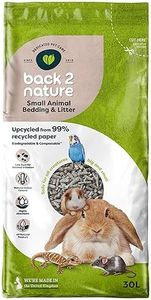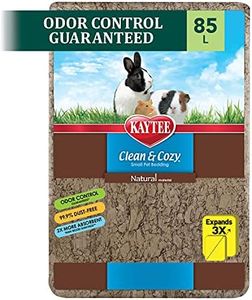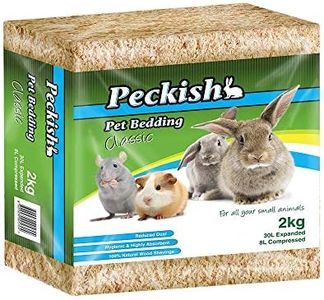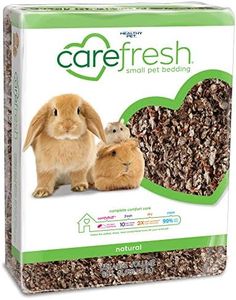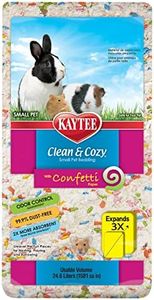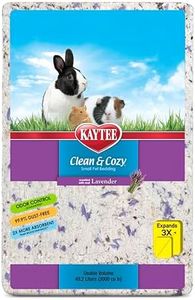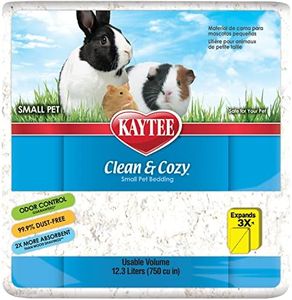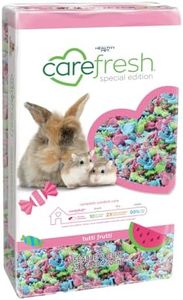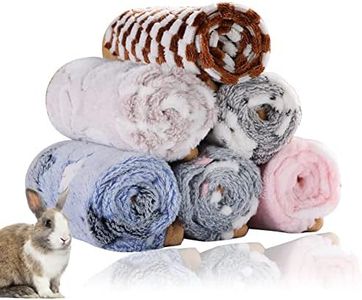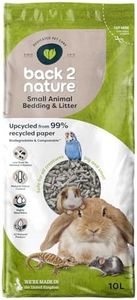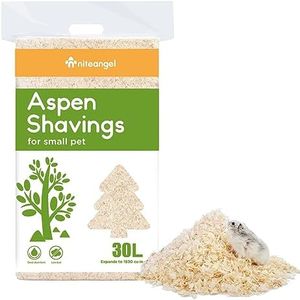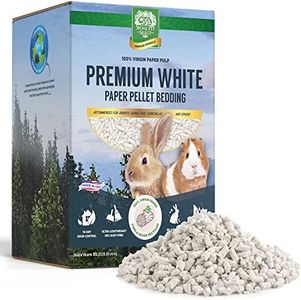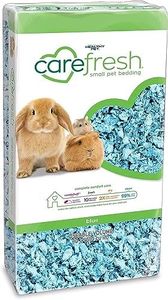We Use CookiesWe use cookies to enhance the security, performance,
functionality and for analytical and promotional activities. By continuing to browse this site you
are agreeing to our privacy policy
10 Best Bedding For Rabbit Cage
From leading brands and best sellers available on the web.By clicking on a link to a third party's website, log data is shared with that third party.
Buying Guide for the Best Bedding For Rabbit Cage
Choosing the right bedding for your rabbit's cage is essential for their health, comfort, and cleanliness. Bedding serves multiple purposes – it absorbs moisture, controls odor, provides a soft resting spot, and encourages digging or burrowing behavior. To select the best option, consider your rabbit's specific needs, such as sensitivities, the ease of cleaning, and how well the bedding controls odor and moisture. Always prioritize rabbit-safe, non-toxic materials and think about how often you want to change or clean the bedding.Material TypeThe material of the bedding is crucial because not all bedding types are safe or comfortable for rabbits. Common choices include paper-based, aspen, straw, hay, and fleece liners. Paper and aspen are great for absorbency and tend to be dust-free, while straw and hay add a burrowing element but may not offer much in moisture control. Fleece liners are washable and reusable, providing softness but requiring regular laundering. Avoid pine and cedar shavings as they can be harmful to rabbits. When choosing, think about whether your rabbit likes to burrow, has allergies, or if you’re looking for something easy to maintain.
AbsorbencyAbsorbency measures how well the bedding soaks up urine and keeps the cage dry. High absorbency minimizes the risk of your rabbit sitting in wet bedding, which could lead to health issues. Low-absorbency options may require more frequent changes. Paper-based bedding and certain wood pellets generally have high absorbency, while straw and hay absorb less and may create a mess. Choose a highly absorbent bedding if you want less frequent cleaning or have a particularly messy rabbit.
Odor ControlOdor control is about how well the bedding can neutralize or mask the smell of rabbit urine and droppings, which is important for keeping your home fresh. Some materials like paper pellets or special odor-control bedding are designed to trap smells, while options like hay and straw offer little odor protection. If your rabbit’s cage is in a common living space or you're sensitive to smells, opt for bedding types with a reputation for good odor control.
Dust LevelBedding with a low dust level is safer for rabbits because dust can cause respiratory issues. Dusty bedding is particularly problematic for rabbits with sensitive respiratory systems. Paper-based bedding and aspen are often dust-free, whereas some wood shavings and straw can be dustier. If your rabbit sneezes often or has respiratory sensitivities, look specifically for dust-free varieties.
Ease of CleaningEase of cleaning refers to how simple it is to remove dirty bedding and refresh the cage. Options like fleece liners are easy to shake out and throw in the wash, while loose paper or wood bedding requires full removal and replacement. Frequent cleaning helps maintain your rabbit's health and a pleasant smelling home. If you're short on time, pick a bedding that’s quick to tidy up between full changes.
Edibility and SafetySince rabbits often nibble on their bedding, it’s important that whatever you use is non-toxic and safe to eat. Hay, straw, and paper bedding are generally safe if nibbled, whereas wood shavings, especially pine and cedar, can be dangerous. If you have a rabbit that likes to chew everything in sight, always ensure the bedding is edible and free from harmful additives or fragrances.
